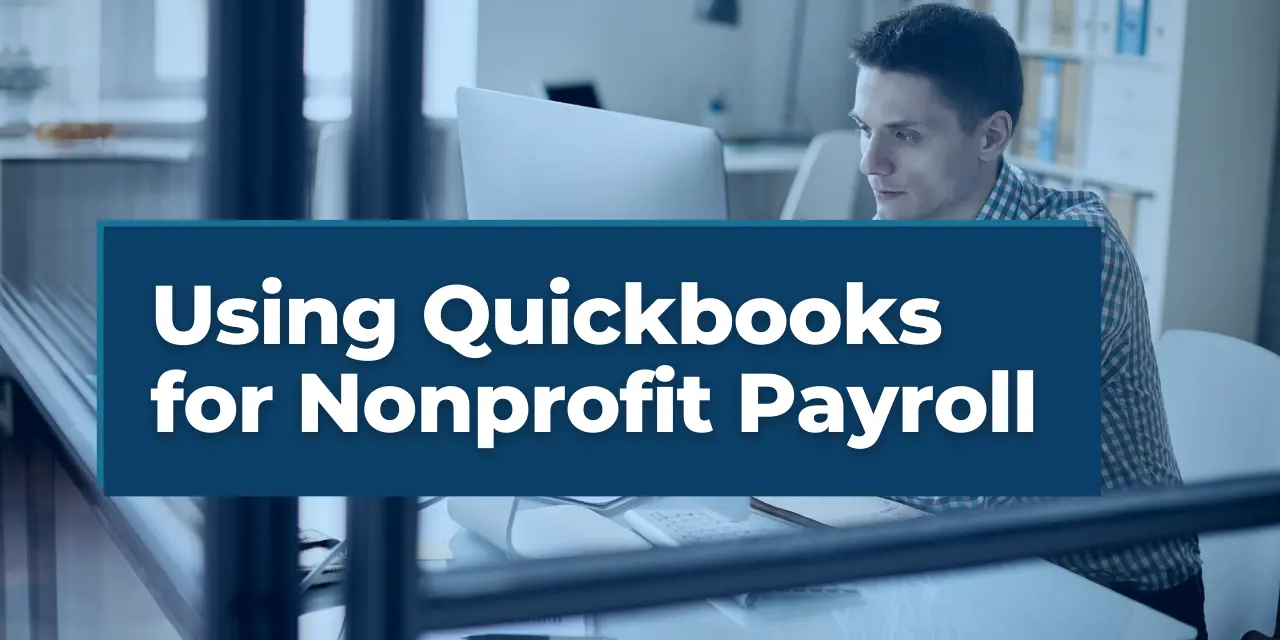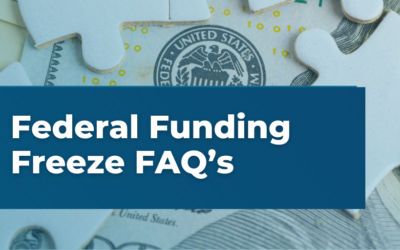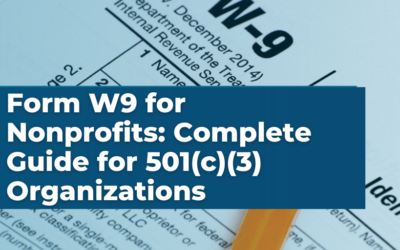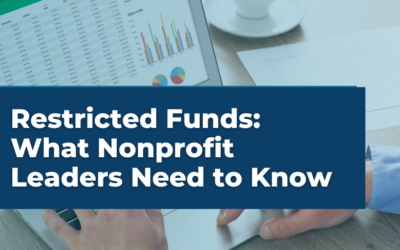Efficient financial management is pivotal for nonprofits, especially in handling payroll. Nonprofit payroll help extends beyond mere payment processing; it involves maintaining financial integrity and adhering to both legal and grant standards. For nonprofit leaders, mastering the intricacies of payroll is challenging yet essential for their organization’s smooth operation. This article offers clear insights and practical strategies to simplify and excel in nonprofit payroll management, with a special focus on utilizing QuickBooks for streamlined operations.
Understanding Nonprofit Payroll
Payroll, at its core, refers to the process of managing the payment of wages by a business to its employees. This encompasses the calculation of employee salaries, wage deductions, and the distribution of paychecks. In the context of nonprofit organizations, payroll takes on unique characteristics when compared to for-profit entities. QuickBooks can play a pivotal role in managing these unique payroll characteristics, offering tailored solutions for the nonprofit sector.
Key Distinctions Between Nonprofit and For-Profit Payroll Systems
- Taxation: Nonprofits may be exempt from certain taxes, altering payroll tax calculations. In contrast, for-profits have a more straightforward tax obligation.
- Compensation Structures: Nonprofits often use varied compensation, including non-monetary benefits, due to budget limits. For-profits typically offer more monetary incentives.
- Regulatory Compliance: Nonprofits must comply with specific regulations to maintain tax-exempt status, impacting payroll decisions. For-profits face different compliance primarily focused on labor laws.
- Employee Classification: Nonprofits need to differentiate between volunteers, part-time, and full-time employees for payroll, unlike for-profits which mainly deal with employees and contractors. QuickBooks aids in effectively managing these classifications, ensuring accurate payroll processing for each group.
- Budget Constraints: Nonprofits operate with tighter budgets and variable funding, affecting payroll stability. For-profits usually have steadier revenue streams for payroll planning.
- Reporting Requirements: Nonprofits have stringent transparency requirements for maintaining public trust, and influencing payroll reporting. For-profits, while adhering to standards, face less public scrutiny over payroll.
Essential Components of Payroll Management
For nonprofit leaders, understanding the key components of payroll management is crucial to ensure both compliance and operational efficiency. Nonprofit payroll encompasses several unique elements that require careful consideration. Here’s a breakdown of these essential components:
- Employee Classifications: Nonprofits must accurately classify workers as full-time, part-time employees, or volunteers. This classification impacts tax obligations and benefits eligibility.
- Full-time employees may be eligible for a full range of benefits.
- Part-time employees might receive limited benefits.
- Volunteers typically do not receive traditional employee benefits.
- Taxable and Non-Taxable Compensation: Identifying what aspects of compensation are taxable is crucial for nonprofits.
- Salaries and wages are generally taxable.
- Certain benefits, like health insurance, may be non-taxable.
- Reimbursements for expenses may not be taxable if they meet specific criteria.
- Payroll Taxes Specific to Nonprofits: Understanding the nuances of payroll taxes that apply to nonprofits is essential.
- Federal Income Tax Withholding: Nonprofits must withhold and remit federal income tax.
- FICA Taxes: Nonprofits are generally responsible for Social Security and Medicare taxes.
- Unemployment Taxes: Nonprofits have options for how they contribute to unemployment insurance.
- Benefits Administration: Offering and managing employee benefits, while staying within budget constraints.
- Health insurance, retirement plans, and other benefits need to be managed effectively.
- Compliance with regulations related to employee benefits is crucial.
- Payroll Processing and Frequency: Deciding on a payroll schedule and ensuring timely and accurate payroll processing.
- Choosing between weekly, bi-weekly, semi-monthly, or monthly pay periods.
- Ensuring payroll accuracy to maintain employee trust and meet regulatory requirements.
- Record Keeping and Reporting: Maintaining accurate records for compliance and transparency.
- Keeping detailed records of all payroll transactions.
- Reporting payroll information to government agencies as required.
By mastering these components, nonprofit leaders can create a payroll system that not only meets legal requirements but also supports their organization’s mission and values. QuickBooks offers comprehensive tools to handle these components, from employee classification to tax management and benefits administration. Up next, we will delve into the specifics of compliance and legal requirements for nonprofit payroll.
Navigating Compliance and Legal Requirements in Nonprofit Payroll
Adhering to compliance and legal requirements is a pivotal aspect of nonprofit payroll management. Nonprofits must navigate a complex web of federal and state regulations to ensure lawful operation. Understanding and complying with these regulations is crucial to avoid penalties and maintain the organization’s integrity. Key areas of focus include:
- Federal and State Payroll Regulations: Nonprofits must comply with both federal and state laws regarding employee wages, tax withholdings, and reporting. This includes adherence to the Fair Labor Standards Act (FLSA) for wage and hour standards and the Internal Revenue Service (IRS) guidelines for tax withholdings.
- Record-Keeping Requirements: Accurate and detailed record-keeping is mandatory. This involves maintaining records of employee compensation, tax withholdings, and hours worked.
For more in-depth information on federal payroll regulations, nonprofit leaders can visit the IRS website. Additionally, understanding specific state regulations is crucial, and information can typically be found on the respective State Labor Department’s website.
By staying informed and compliant with these legal requirements, nonprofits can ensure smooth payroll operations while upholding their reputation and legal standing.
Effective Payroll Management Strategies for Nonprofits
For nonprofit organizations, effective payroll management is not just about compliance; it’s also about aligning payroll practices with the organization’s mission and budget. Here are key strategies to ensure effective payroll management in nonprofits.
5 Tips for Streamlining Your Nonprofit’s Payroll
- Prioritize Accurate Budgeting: Develop a detailed payroll budget that aligns with your financial goals. This involves considering all expenses, including salaries, taxes, and benefits, to avoid unexpected shortfalls.
- Automate Payroll Processes: Implement automation in your payroll system to enhance efficiency and accuracy. Automation reduces manual errors and saves valuable time that can be redirected to other organizational priorities.
- Ensure Regular Compliance Checks: Stay updated with payroll-related legal requirements and conduct regular compliance reviews. This proactive approach helps in avoiding penalties and ensures your payroll practices meet all regulatory standards.
- Invest in Staff Training and Clear Communication: Provide ongoing training for your payroll team and communicate payroll policies transparently with all employees. Well-informed staff can manage payroll more effectively, and clear communication builds trust within your organization.
- Establish a Contingency Plan: Prepare for potential payroll challenges with a solid backup plan. Having a contingency strategy in place ensures payroll continuity during unexpected situations, like funding changes or technical issues.
Leveraging Technology in Nonprofit Payroll: Embracing QuickBooks
When we are setting up a new payroll system for our clients, we almost always recommend using Quickbooks. QuickBooks, known for its robust features and user-friendly interface, can be a game-changer in managing nonprofit payroll efficiently. Here are some practical tips for using QuickBooks in your nonprofit payroll system, along with helpful links for more information:
- Utilize Automated Payroll Functions: Automate payroll calculations, tax deductions, and direct deposit processes with QuickBooks. Explore QuickBooks’ automated payroll solutions on their payroll feature page.
- Customize for Nonprofit Needs: Tailor QuickBooks to your nonprofit’s requirements, like customizing account charts and managing fund allocations. Visit QuickBooks’ support page on nonprofit chart of accounts for a comprehensive guide.
- Track Employee Hours and Expenses: Use QuickBooks to accurately track employee hours and reimbursable expenses, ensuring precise payroll calculations. Check out QuickBooks’ time tracking options.
- Maintain Compliance with Payroll Reports: Generate necessary payroll reports through QuickBooks for compliance and auditing. Discover the range of payroll reporting features QuickBooks offers on their payroll reporting guide.
- Regularly Update Payroll Information: Keep your payroll information up-to-date in QuickBooks, including employee details and tax rates. Visit this guide for updating payroll information best practices.
- Integrate Payroll with Accounting: Seamlessly integrate your payroll data with the accounting side of QuickBooks. This integration simplifies financial reporting and provides a clearer financial picture. Learn more about integration capabilities on QuickBooks’ integration features page.
- Utilize Mobile Accessibility: Take advantage of QuickBooks’ mobile app for managing payroll anytime, anywhere. This feature is particularly useful for nonprofits with remote or field-based employees. Explore the mobile features of QuickBooks on their mobile app page.
- Access QuickBooks Payroll Support: Utilize the extensive support network QuickBooks offers, including tutorials, forums, and customer service, for any payroll-related queries or issues. Visit QuickBooks’ support center for resources and assistance.
Leveraging QuickBooks in your nonprofit’s payroll management not only streamlines processes but also provides insightful financial data, essential for informed decision-making.
Handling Payroll Challenges in Nonprofits
Managing payroll in a nonprofit setting comes with its unique set of challenges. From fluctuating funding sources to maintaining compliance with complex tax laws, nonprofit leaders must be adept at navigating these issues. Here are some common payroll challenges and strategies to address them:
- Variable Funding Sources: Nonprofits often rely on grants and donations, which can fluctuate. It’s important to have a flexible payroll structure that can adapt to these financial variations.
- Compliance with Tax Laws: With frequently changing tax laws, staying compliant can be daunting. Utilizing tools like QuickBooks for updated tax calculations can greatly simplify this process.
- Managing Employee Classification: Mistakes in classifying employees and volunteers can lead to legal issues. Regular audits and using payroll software can help in accurate classification.
Conclusion
Effective payroll management in nonprofits is a complex but crucial aspect of organizational success. By understanding the unique aspects of nonprofit payroll, leveraging technology like QuickBooks, and implementing effective strategies, nonprofit leaders can ensure their payroll systems are efficient, compliant, and supportive of their mission and employees. Embracing these practices not only streamlines payroll processes but also contributes to the overall health and sustainability of the nonprofit organization.
Additional Resources
For further reading and resources on nonprofit payroll management, consider exploring the following:
- National Council of Nonprofits for broader nonprofit management resources.
- QuickBooks Nonprofit Community for specific QuickBooks tutorials and forums.
- IRS Charities and Nonprofits for compliance and tax-related information.





